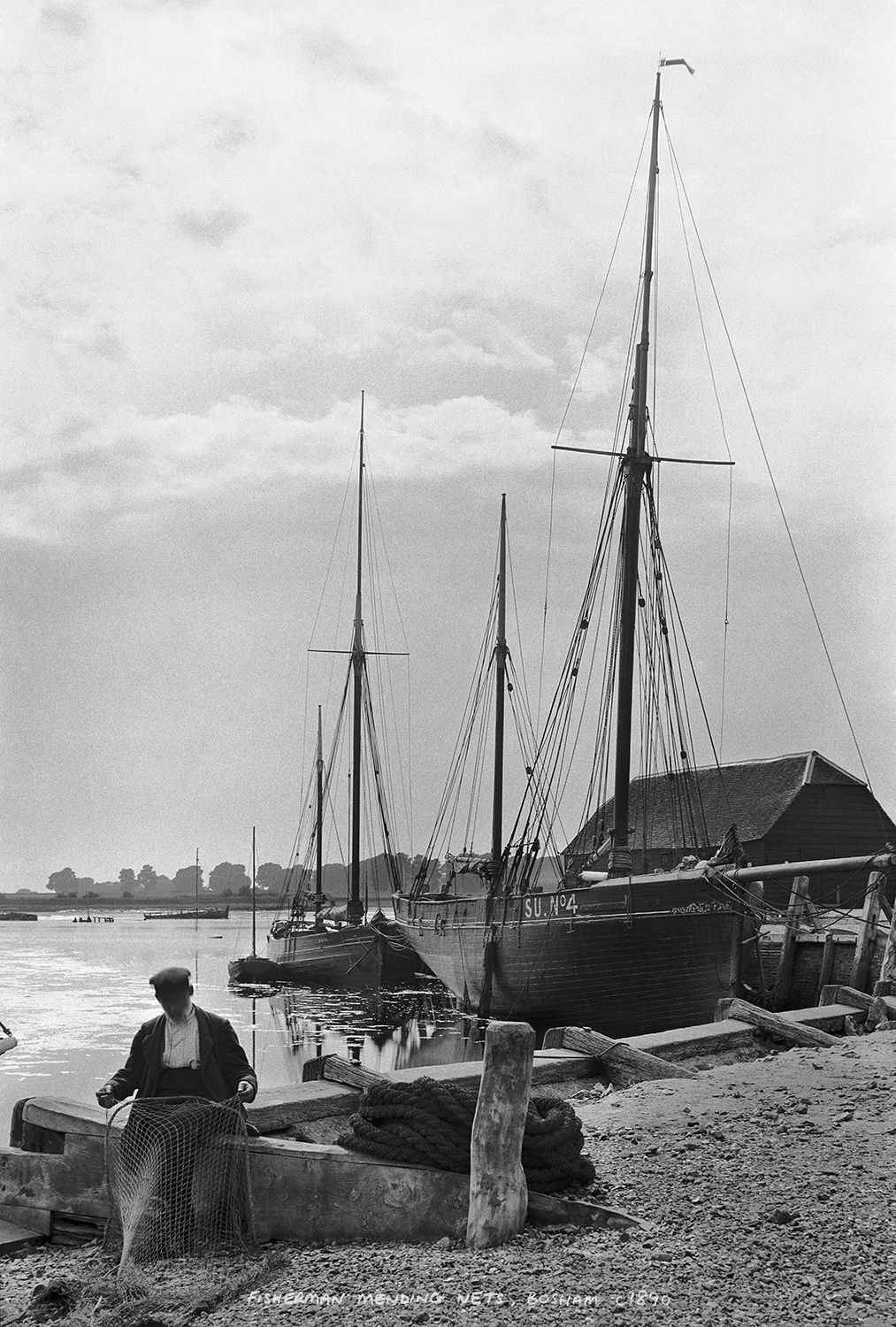Bosham Gallery Archive
Bosham's fishing industry enjoyed a boom in the second half of the nineteenth century. The arrival of the railways in 1846 allowed the fishermen to expand their markets, and Bosham's boatbuilders began to build larger fishing boats that could stay at sea longer, and hold larger cargoes of fish.
Young oysters were dredged up in the shallow waters of the English Channel and off the French coast, and left to mature in nursery beds within Chichester Harbour. Scallops were dredged up in deeper waters (below 25 feet) of the English Channel, where herring, mullet, crab and bass could also be fished with ease. Mackerel, shrimp, and cockles were in plentiful supply in Chichester Harbour, and Bosham's fishing fleet sailed to Shoreham to fish for mussels, and to the North Sea for cod.
By the late nineteenth century, when this photograph was made, forty fishing boats worked from Bosham, regularly fishing all along the English Channel as far as Falmouth, and the north coast of France, particularly near Brittany. The boats would typically be away for four or five days at a time, and they would land their catches daily in either Portsmouth or Southampton, as well as selling fish at Bosham Quay.
The life of a fisherman was hard, because they had to be able to respond to the changing tides and be out on the water in all conditions. Even within the harbour itself the weather could be threatening, and boats that ventured out of the harbour in bad weather would have had a very difficult time. They had no navigation equipment, mechanical power or safety equipment; if they got into difficulties, they had to get themselves out of it, and it wasn't uncommon to lose a ship and all hands at sea.
But fishing could be very profitable and Bosham's fishermen, who were paid in shares of the catch, thrived during the oyster boom of the 1890s. The fishermen were well-respected members of the community, particularly the oyster dredgermen who were considered the craftsmen of the fishing fleet.
During summer months, the harbour's fishing fleets raced in regattas organised by the customs house, and when yachting became an occupation of the rich in the late 1800s, the fishermen crewed in famous yachts such as the Sir Thomas Lipton, Shamrock and Britannia in the summer months, and spent the winter months fishing in Bosham.
© Luke Whitaker
